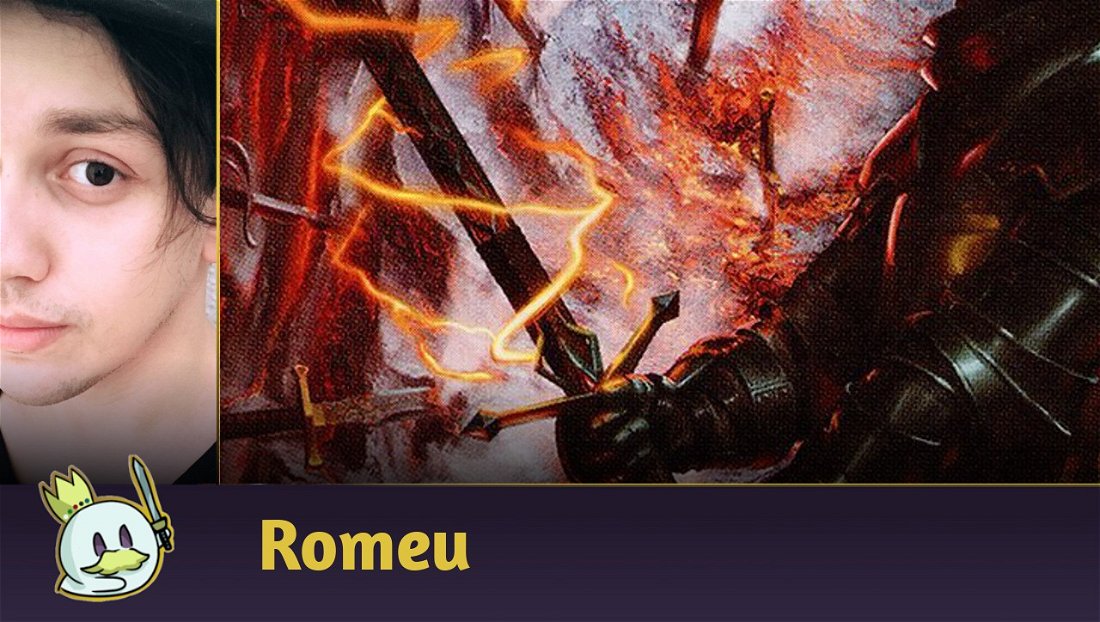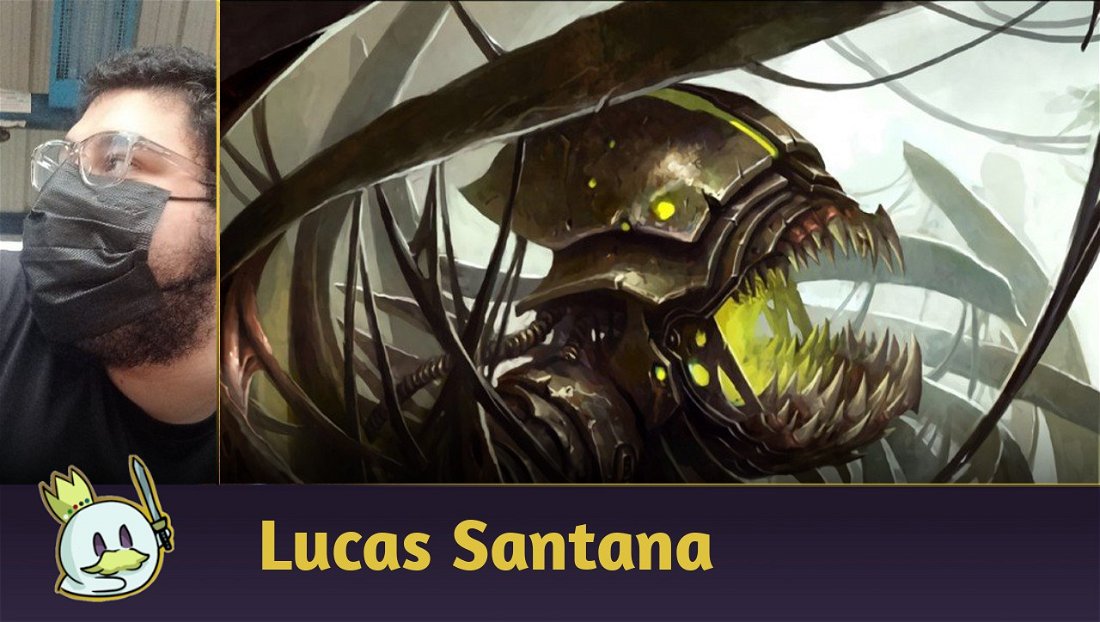Introduction
One of the parts that scares new Magic players the most is the amount of different mechanics and keywords present in the cards. In fact, any experienced player who hasn't played for a few years is surprised when they get back in action and sees all the new features of the game.
Over the years, Magic has developed innovative designs, increasing the complexity of the game, which, let's face it, has always been high. Currently, there are hundreds of mechanics and keywords, some that you always see and others that have been lost in time, either because they are too complicated, inefficient or just a collective outbreak.
In this article, we will talk exactly about these mechanics. These choices go through personal experience and I believe that each player has had a specific problem with some mechanics and I would like to know what yours is in the comments.
Magic's Most Complex Mechanics
Phasing
Phasing is an ability that triggers at the untap step every turn, let's see how the keyword is described:
Phasing (Phasing is a static ability that modifies the rules of the untap step. During each player’s untap step, before the active player untaps permanents, all phased-in permanents with phasing that player controls “phase out.” Simultaneously, all phased-out permanents that had phased out under that player’s control "phase in".)

So, during each player's untap step, before untap, all permanents that are "phased out" under that player's control "phase in." Due to this timing, permanents that have just phased in usually untap normally soon afterward.
A big problem with this mechanic is the interactions with it, for example, phasing doesn't mean that the permanent left the battlefield, but that it doesn't exist, that is, phasing doesn't trigger any ability to enter or leave the battlefield. While permanents are out of play it is impossible to have any interaction with them and at the same time any Aura, equipment, counters or fortifications remain with the permanents after Phase out and Phase in as per the rules it remains the same. It also goes for summoning sickness from creatures that have entered the battlefield, they can both attack and activate tap abilities. In addition, tokens can also be phased out and phased in like other permanents.
So many particularities make Phasing one of the mechanics that brings a lot of confusion to many tables.
Mutate
(Mutate appears on some creature cards. It represents a static ability that functions while the spell with mutate is on the stack. “Mutate [cost]” means “You may pay [cost] rather than pay this spell’s mana cost. If you do, it becomes a mutating creature spell and targets a non-Human creature with the same owner as this spell.” Casting a spell using its mutate ability follows the rules for paying alternative costs.)
Released on Ikoria, Mutate is by far the most recent mechanic on our list. In short, mutate allows us to merge one creature into another while maintaining the ability of all creatures that have mutated with name, color, cost, power/toughness, abilities, etc. of the creature on top.

So far, everything is seemingly quite intuitive and not problematic, but Mutate has some interactions that can be confusing. For example, if you cast a creature for its mutate cost and your opponent destroys the mutated target, to try to prevent a creature from getting even stronger, it doesn't destroy both creatures. In this case, the creature that was cast for the mutate cost enters the battlefield as if it had been cast normally.
Mutate also doesn't trigger enter battlefield abilities, as it's not entering the battlefield but altering a permanent. If the mutated creatures are exiled from the battlefield and come back, each creature returns to the battlefield individually and are no longer together. If you have to put them in your deck, all mutated creatures go into the deck. If one of the mutated creatures has an ability that refers to its name, but it has changed its name because it is not on top, the text will refer to "that creature".
Anyway, Mutate presents several ifs, leaving everything confusing when not everyone is familiar with the mechanics, even though it is relatively new and is still fresh in the memory of most players. This is indeed an interesting ability, but it usually gives us a headache when we play it.
Regenerate
( If the effect of a resolving spell or ability regenerates a permanent, it creates a replacement effect that protects the permanent the next time it would be destroyed this turn. In this case, “Regenerate [permanent]” means “The next time [permanent] would be destroyed this turn, instead remove all damage marked on it and tap it. If it’s an attacking or blocking creature, remove it from combat.”)
Regenerate is also our highlight on this list because of the thousands of questions we find on the internet and the difficulty of often understanding how it applies in the game. If we go directly to the rules, regenerating seems to be something simple, but in fact it is not.
Let's break it down to better understand the interactions of this keyword.
If a static ability's effect regenerates a permanent, it replaces destruction with an alternate effect each time that permanent is destroyed. In this case, “Regenerate [permanent]” means “Instead, remove all damage suffered by [permanent] and tap it.” If it's an attacking or blocking creature, remove it from combat.
To facilitate the understanding of regenerating, a term “regeneration counter” was created so that it becomes something more visible, as we can see in Wrap in Vigor.

Thus, from the moment a creature is regenerated, it gains a regeneration counter that until the end of the turn will prevent the creature from being destroyed. When the permanent takes lethal damage or is destroyed by a spell or ability, the counter activates and regenerates the creature's toughness in addition to tapping it.
When regenerating doesn't work?
First, we learned that regenerating must be used before destruction, as it is not an effect of reanimating a creature, but rather "healing" it. Regenerate also doesn't prevent sacrifices, exile, and remove from the game, as none of them refer to damage, nor does it prevent a creature from being killed when a spell or ability forces the creature's toughness to 0.
How does regenerating work during combat?
If the creature is dealing damage to a blocker that has a regeneration counter, no damage is dealt. Damage is suffered by the creature to the point of destruction, when regeneration takes place. The creature is then tapped and removed from combat, and damage is no longer dealt by the previous attack.
If you are blocking someone, damage will be dealt. Since the regeneration is only activated when the creature takes lethal damage, the creature blocking it from being regenerated deals combat damage before being tapped and taken out of combat.
If the attacking creature is destroyed before the damage step being targeted by a spell or ability, no damage is dealt as the regeneration shield will activate, and the creature will be removed from combat.
Confusing, indeed!
The tip not to make mistakes when using this keyword is to remember the regeneration counter and remember that after activated, the creature will be tapped and removed from any combat!
Protection
(Protection is a static ability, written “Protection from [quality].” This quality is usually a color (as in “protection from red”) but can be any characteristic value or information. If the quality happens to be a card name, it is treated as such only if the protection ability specifies that the quality is a name. If the quality is a card type, subtype, or supertype, the ability applies to sources that are permanents with that card type, subtype, or supertype and to any sources not on the battlefield that are of that card type, subtype, or supertype.)
Protection has long been one of the mechanics that has always caused some kind of doubt on Magic tables around the world. When we stop to read and really understand this mechanic, we see that it is not that complicated, but because few cards with protection have a text to remember the mechanic's rule, which ends up confusing many players, especially beginners.
The first step to better understand this mechanic is to understand what the card is protected from. For example, Stormbreath Dragon has protection from White, cannot be targeted by any abilities of cards of that color, not even equipped or enchanted by white, as well as not taking damage from white creatures, and cannot be blocked by creatures of that color. Yes, protection also serves as evasion!

Some confusions that can arise with protection:
It actually “counters” deathtouch and lifelink, as no damage is dealt to the creature. Protection doesn't protect against board wipes that read destroy/exile/sacrifice all creatures, but it does protect against Blasphemous Act if the creature has protection against red, as the spell deals damage. Meanwhile, trample is not countered by protection, what happens is that the creature will not die from the damage dealt, but the excess is still given to the defending player. I emphasize that effects that stop damage from being prevented interact with protection. The most recent case in Arena is the opponent blocking with Cerulean Drake and taking Bonecrusher Giant adventure mode, the damage cannot be prevented, thus causing the Drake to die.
For those new to the game, these interactions with protection are usually not at all intuitive, leaving room for a lot of confusion and a few minutes looking on the internet to see how it works.
Banding
When you started the list, I'm sure Banding came to your mind. Let's try to understand why nobody understands this mechanics. Perhaps, everything would be easier if when banding was released the cards had some explanation on how it works, but, as we can see, this was not the case.

Banding (As a player declares attackers, they may declare that one or more attacking creatures with banding and up to one attacking creature without banding (even if it has “bands with other”) are all in a “band.” They may also declare that one or more attacking [quality] creatures with “bands with other [quality]” and any number of other attacking [quality] creatures are all in a band. A player may declare as many attacking bands as they want, but each creature may be a member of only one of them.)
Did you understand? No? It's okay!
This is a mechanic which changes the rules for declaring attackers and dealing combat damage.
In practice, when a banded creature attacks, it teams up with a creature and attacks the same opponent, who can block all creatures in the “band” with just one creature. When the band is blocked, the attacking player chooses how damage is dealt to the defender's creature. The opposite happens when a banded creature blocks, giving the defending player the choice of how the damage is dealt, which is a rule change.
I think you can understand why Banding is not at all intuitive, and the difference between attacking and blocking makes everything more confusing when we talk about using mechanics in practice.
Conclusion
This is just the beginning of a series of articles on mechanics that deserve to be highlighted, whether for their complexity, inefficiency or poor design.
If you think a mechanic deserves to be mentioned in the next articles, comment on this post and let us know!














— 评论 0
, 反应 1
成为第一个发表评论的人